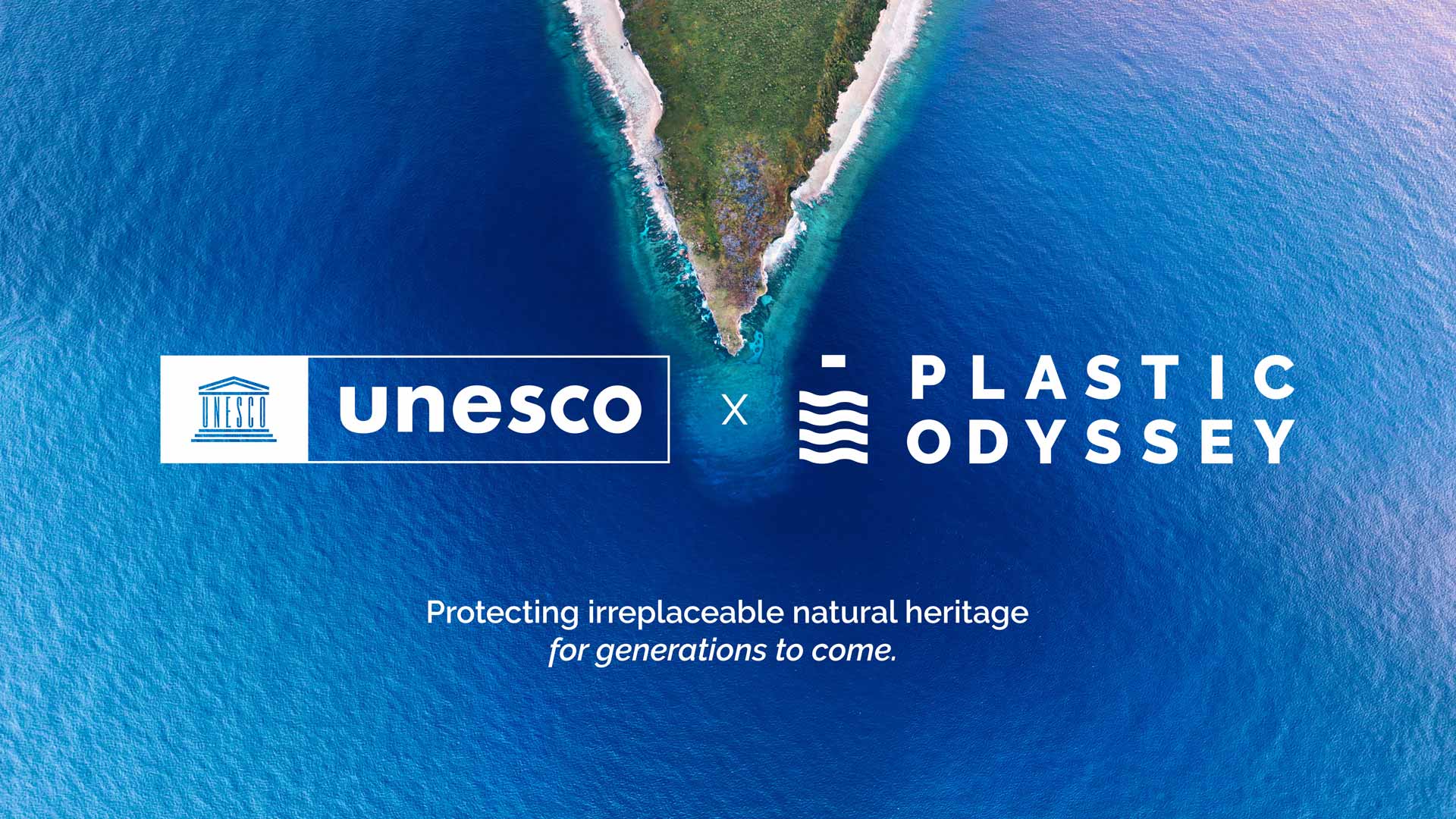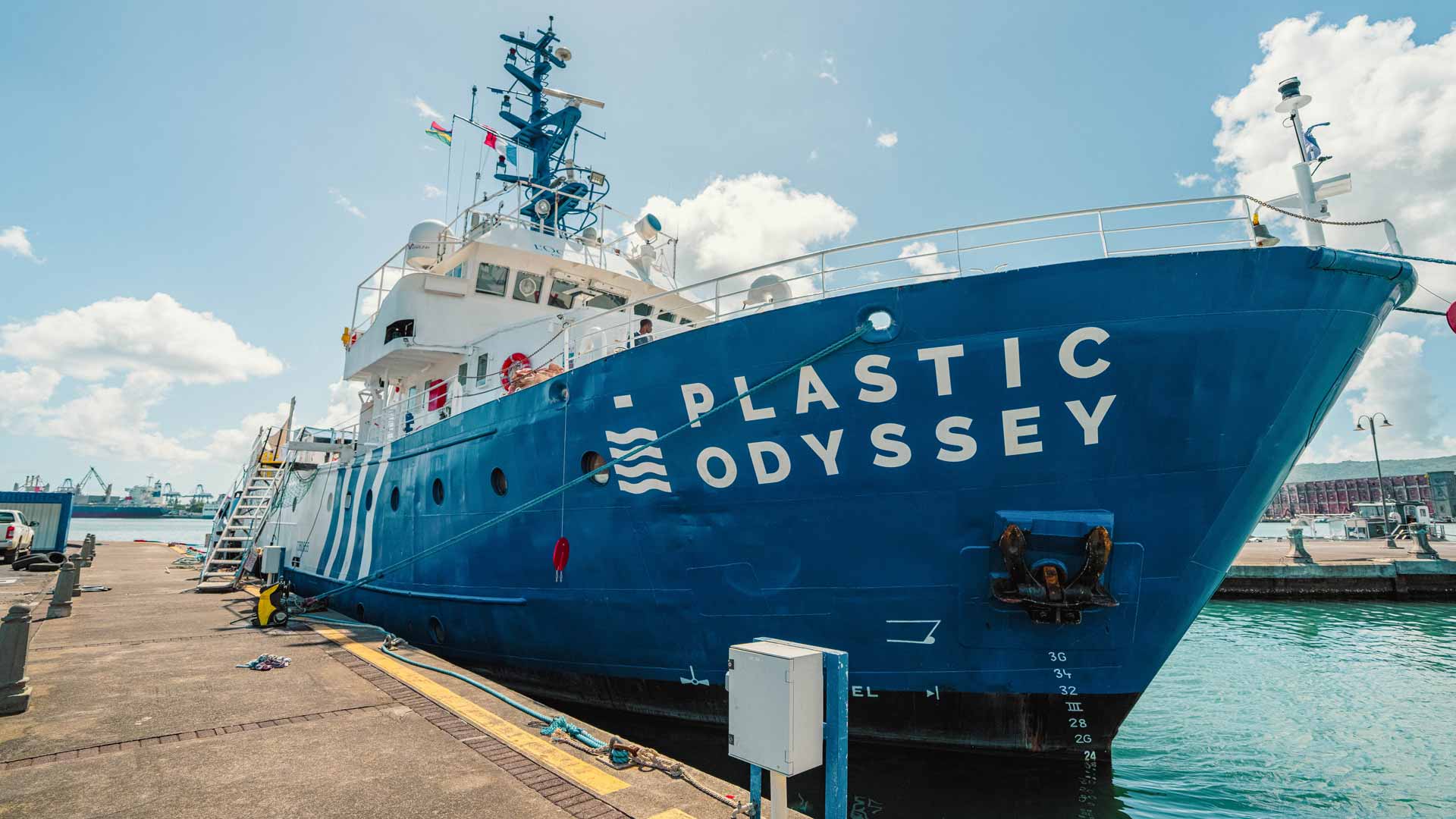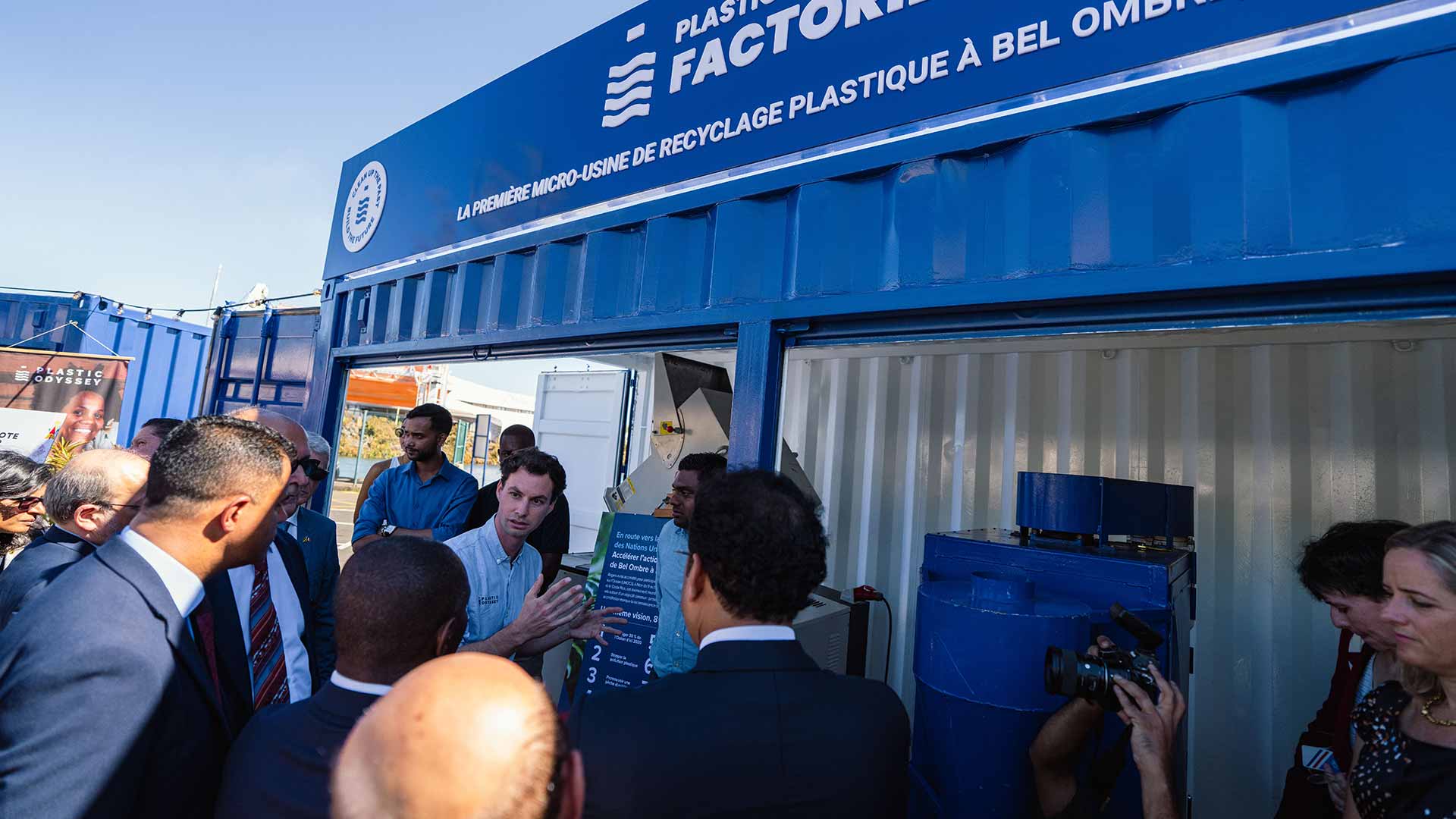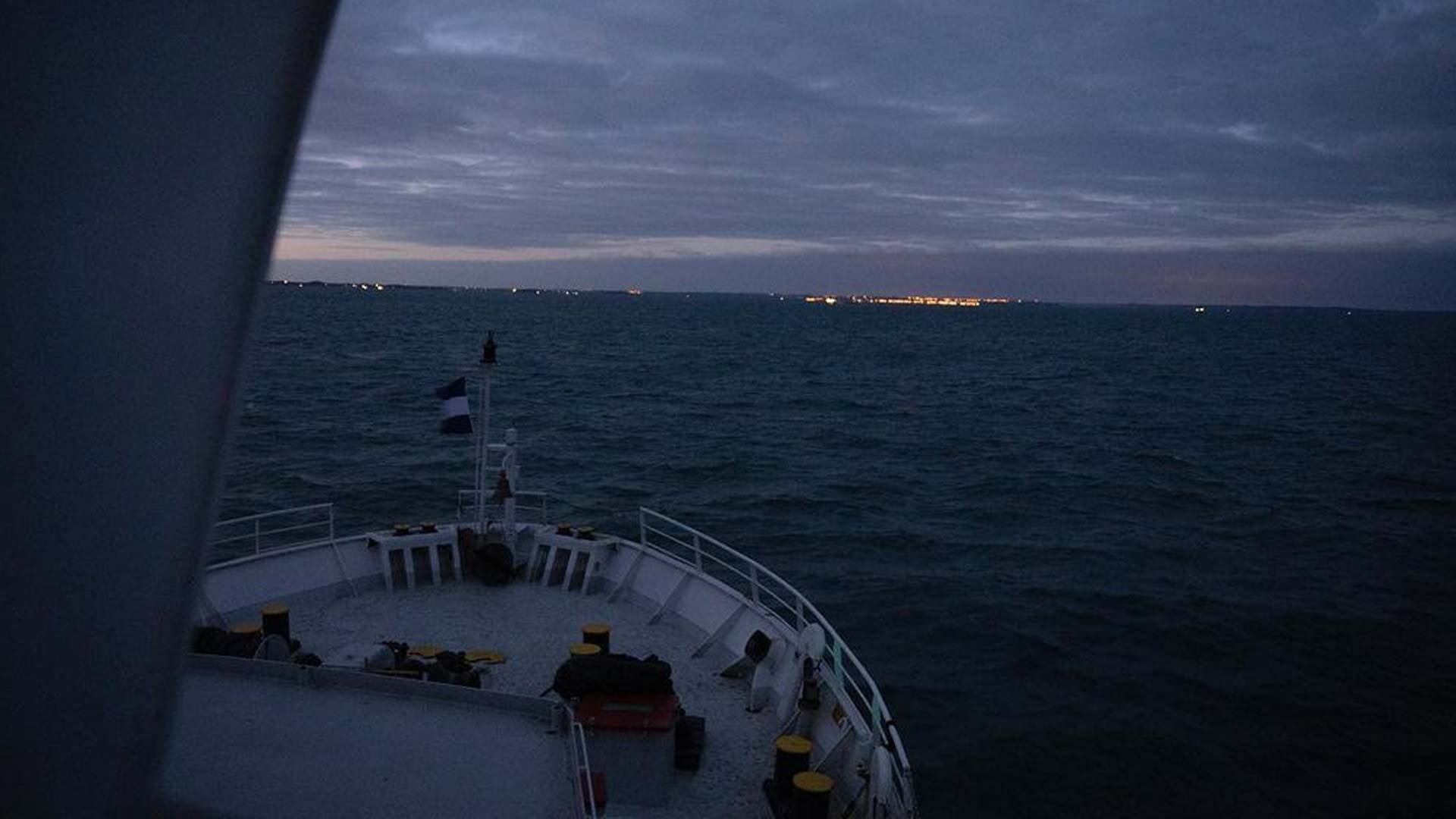
A trip from Dunkirk to Saint-Nazaire
by Alexandre Dechelotte, CCO and co-founder of Plastic Odyssey
First day of 2022, first voyage for the Plastic Odyssey vessel. After many postponements, departure details are finally in place. This is good news for the whole team: seeing the ship at sea – after so many months in the shipyard – reassures our troops and boosts their spirits! This navigation has a very special flavor, because its goal is to reach the port of Saint-Nazaire as soon as possible to start… a new refit! The last one. After more than a year and a half of renovation in the expert hands of the Damen shipyard in Dunkirk, the ship will now undergo its last big repair: replacement of a complete ballast tank whose wear was discovered during an inspection a few months ago. An area that had never been visited during the ship’s 40-plus year life time; it is fortunate that this defect was discovered before the big departure.
Wednesday, January 5th
After a whole day spent on the train, I finally arrived in Cherbourg, France. It’s raining hard at the port. I climb a gate that separates me from the platform and land on the other side, in the mud. After the TGV, this scene sets the mood right away. It’s good to get out of the computer screen and get my feet back on board.
In my bag, I brought all the necessary materials to take pictures. I will assist Louis in his watch tonight. Louis has been a lieutenant on board for more than two months, he is my classmate from the Merchant Navy school and I am very happy to see him again after more than 5 years, especially on our ship! He knows the vessel by heart now, and I haven’t been navigating for a long time. So I rely on him to get my bearings.
Olivier, the captain, briefs us for the departure maneuver: the departure initially planned at 11:30 pm is advanced to 10:30 pm, because we have to keep the engines at low load. The current will be downstream after the Hague cape and will push us towards Saint-Malo during the second part of the night.
Distribution of watch duty:
- Olivier, captain: from departure to 12:00 pm
- Louis, 2nd mate: from 12:00 pm to 04:00 am
- Hugues, chief mate: from 04:00 am to 08:00 am
- Olivier: from 08:00 am to the arrival.
10:30 pm
Two VHF communications with the Cherbourg harbor control station and it’s time to go. I can’t help but appreciate the experience of each crew member on board: everything goes perfectly well, everyone at his post performs precise and efficient movements. It is so good to feel the boat moving under my feet… It is finally navigating!
On board every ship in the world, the exchanges on the bridge during manoeuvres follow the same melody: the officer of the watch (in this case the captain) gives a rudder angle to the helmsman4, who repeats it aloud and executes it. Finally, as soon as the helm reaches the chosen angle, the helmsman announces it, to the acknowledgement of the captain. For example:
Captain: “Port 10”
Helmsman: “Port 10”, then “the helm is 10 to port”
Captain: “Zero the helm”
Helmsman: “Ease to 5,”then “The helm is 5 to port”
Captain: “Like this”
Helmsman: “Steady as she goes”
And so on, until the watch officer decides to switch to autopilot mode. This is only done once the vessel has reached a sufficient speed and is in the safe zone.
And that’s how, in just a few minutes, we clear the Cherbourg harbor dikes and are on our way to the Hague Cape in the North of French Cotentin.
12:00 pm
Louis takes the watch. The watch changeover is another important moment carried out in the same way on all ships. The outgoing Officer Of the Watch (OOW) passes on all information to the incoming OOW starting with position, heading, nearby vessels or potential hazards identified, then weather, engine speed, upcoming events such as radio calls to be made or the next turning point on the route, or any other information useful to navigation.
The end of this stage is marked by the new OOW announcing loud and clear “I have the watch now”, confirmed by the outgoing shift leader with “You have the watch now”. It is at this point that responsibilities are transferred. A sound recording system similar to an aircraft’s black box makes it possible to trace the exchanges on the bridge in the event of a problem. This is why it is important to state loudly and clearly the actions taken and to mark the change of watch.
The watch goes on in a quiet atmosphere and under a magnificently starry sky. We exchange news of our old classmates, some of whom we have lost sight of long ago. These conversations are interrupted by the regular weather reports, the soft hum of the engines, the whistling of the wind… I realize that I have missed this very special atmosphere of the night watch. It’s so far from the typical day’s hustle and bustle that we’ve been living since the launch of the project: emails, phone meetings, deadlines and emergencies of all kinds. I’m not sure anymore who, between the sedentary and the seafarer, lives the biggest routine.
04:00 am
Passage de la Déroute. This is a critical moment in the journey: shallow waters between the Anglo-Norman islands and the French Channel coast in an area where the streams are beating speed records with tidal ranges of up to 14 meters, it is well worth it for the whole crew to be on the alert. The anchors are unleashed to enable us to react in case of problems, the captain Olivier is on the bridge, and the helm is switched to manual mode in the expert hands of Hugues.
The drift is carefully monitored but thanks to Louis’ calculations, we pass at low tide slack water which limits the currents to a minimum The conditions are perfect, the sea is calm and the wind is very low. With the depth sounder, we found at least 9 meters of water. More than enough for the Plastic Odyssey, which has a draft of 3.4 meters. We have reduced the speed as in these shallow areas, the ship can be subject to the squat effect5.
05:10 am
I lay down for a few moments at the back of the bridge in what will soon be our meeting room.. Hugues continues his watch in a safe area, heading South. We are expected at 10:08 am in the Naye lock to enter the harbor of Saint-Malo with the tide A little rest before the first light of the day which will allow me, I hope, to take some nice pictures.
08:20 am
A first in the short history of Plastic Odyssey’s navigations: we are ahead of schedule! The engines were running well at low speed, and the tide helped us a lot. We are now in position in front of the entrance channel of the port of Saint-Malo to wait for the opening of the lock.
10:10 am
Finally moored in the lock. While docking, the starboard anchor touched the dock. A little noise but no damage. Phew!
Almost immediately, the East door of the lock opens in front of us and we let go the mooring lines to start our maneuver in the Vauban basin and present ourselves in front of the Saint-Louis pier.
10:20 am
Turning6 on the port side. Without a bow thruster but in very good weather conditions, Olivier and Hugues slowly approach the pier and allow the forward and aft maneuvering stations to send their heaving lines ashore easily. The bow7 and stern spring lines are first made fast8 to adjust the longitudinal position of the ship. Then, one head line and one stern line8 and finally two breast lines10 secure the distance from the pier and lock the position of the ship.
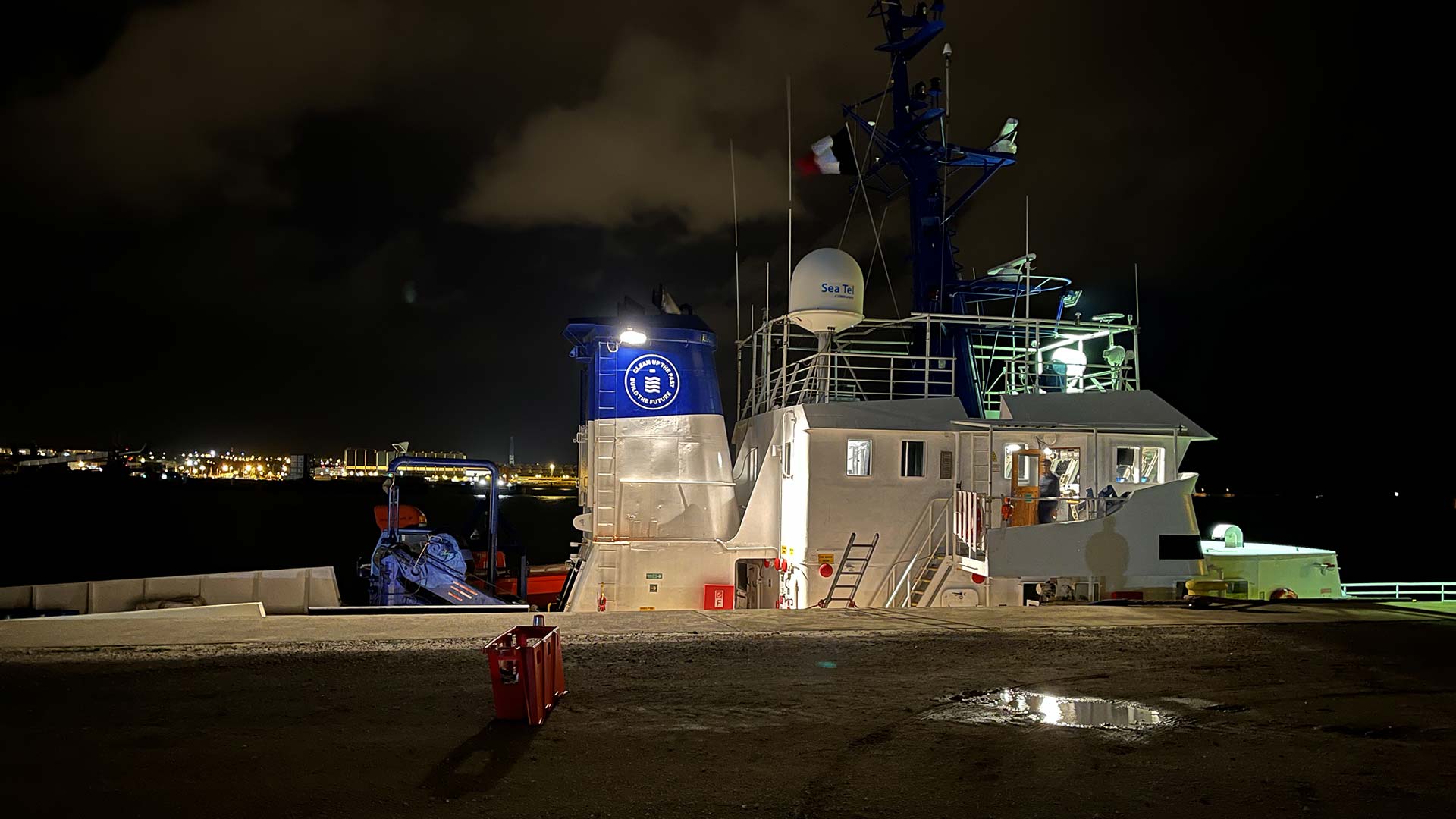
Plastic Odyssey vessel at Cherbourg dock by night
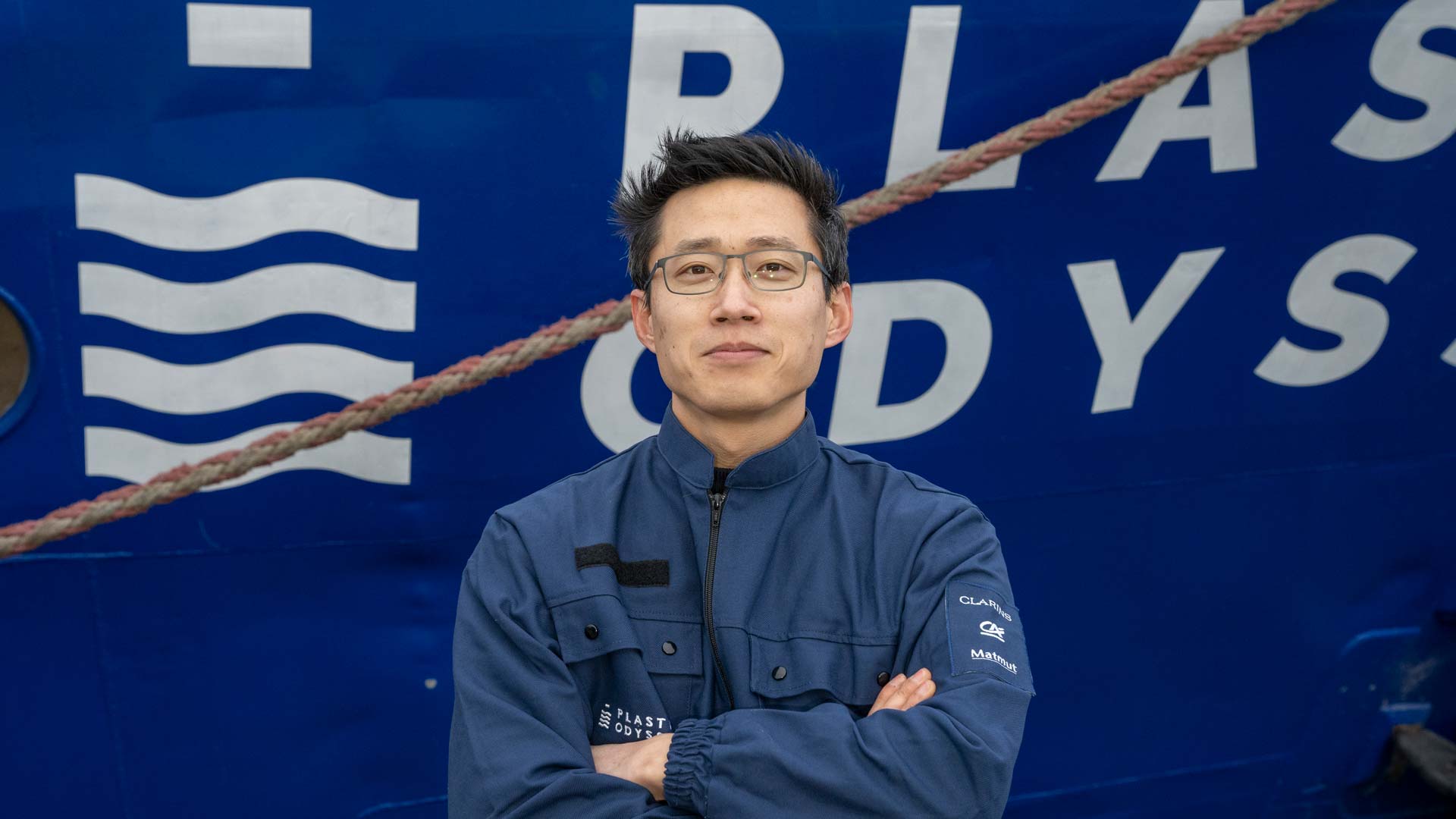
Olivier, Captain of the Plastic Odyssey
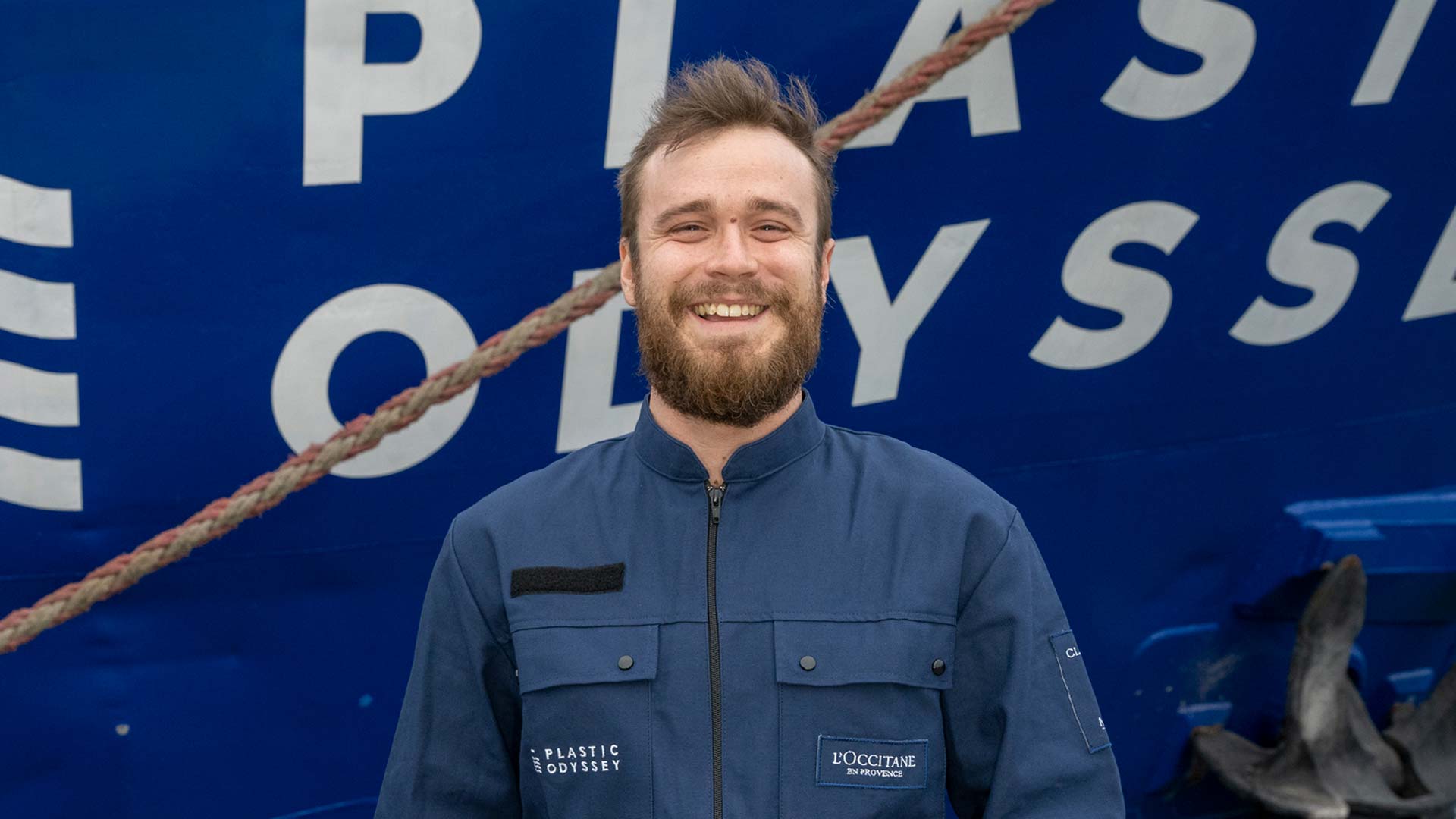
Louis, 2nd mate of the Plastic Odyssey
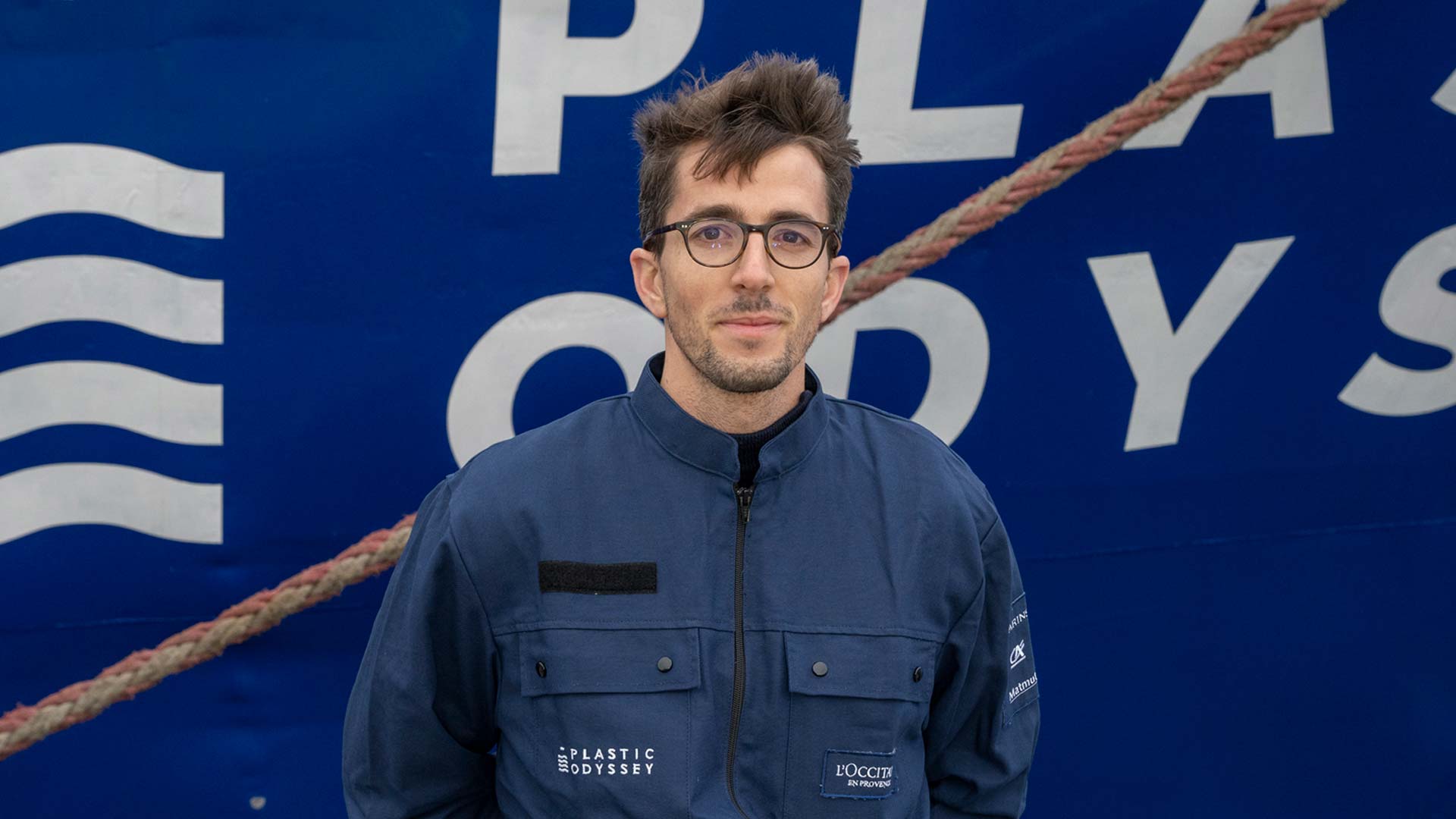
Hugues, chief mate of the Plastic Odyssey
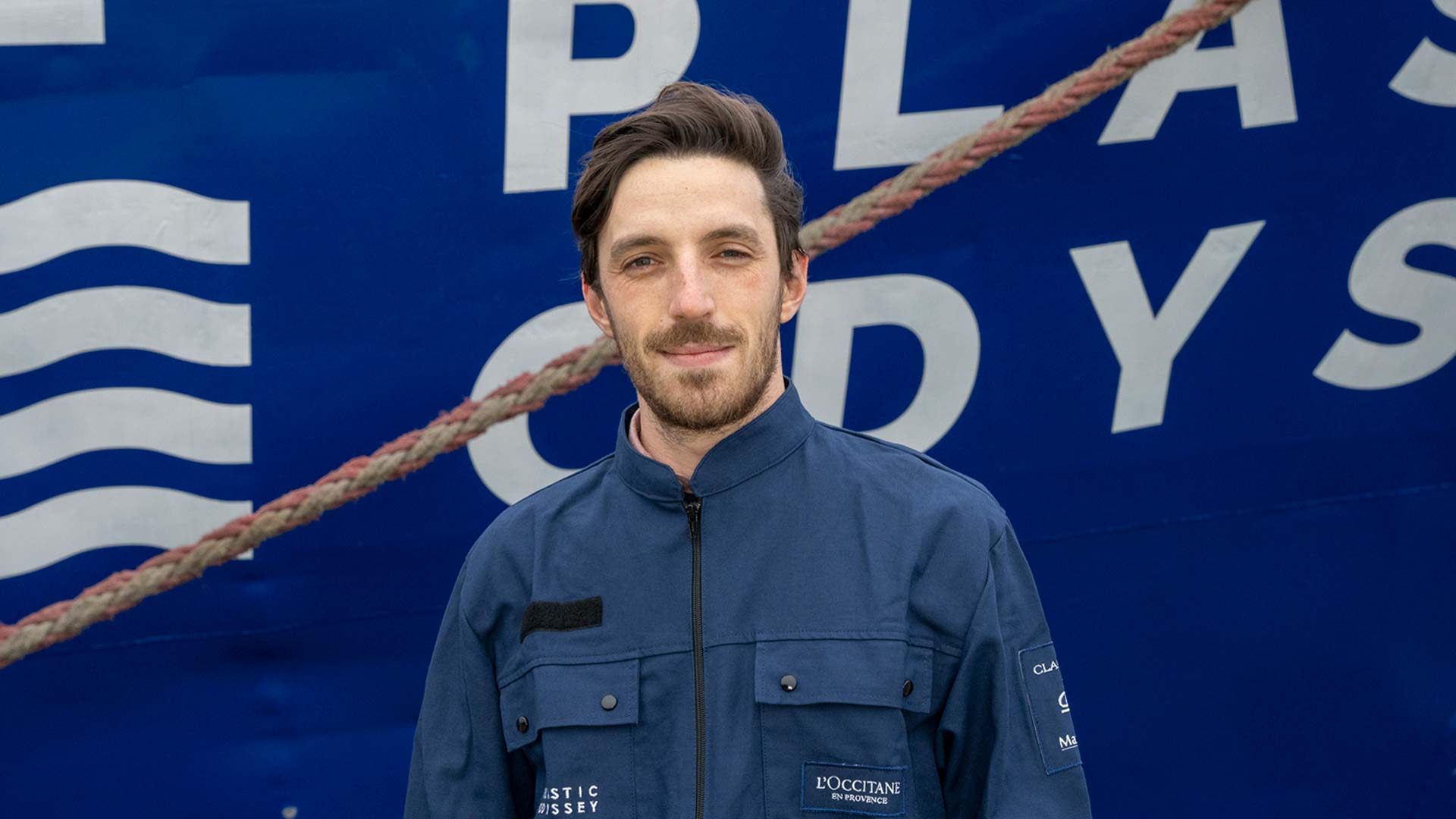
Alexandre, CCO and co-founder of Plastic Odyssey
4 This order means that the last course must be maintained at the helm.
5 The squat or crouch effect is generated by water flows that accelerate under the hull when the bottom is relatively close to the keel. It can cause the vessel to sink slightly, increasing the risk of grounding.
6 rotation maneuver of the ship.
7 mooring lines positioned bow to stern or stern to bow to stop the movement of the vessel on the longitudinal axis.
8 passed in the bolars located on the dock.
9 mooring lines positioned fore and aft to keep the vessel in position with respect to the dock.
10 mooring lines perpendicular to the ship that allow the distance between the dock and the planking to be adjusted.
Latest News
Plastic Odyssey and UNESCO Join Forces to Restore Marine World Heritage Sites
Plastic pollution is on the rise—and even the world’s most protected marine ecosystems are not immune. On the occasion of the 2025 United Nations ...
Seychelles: Program of Events in Victoria, Mahé
Discover the program for the Victoria stopover, from May 29 to June 13, where numerous events will be organized: “Treasure Trunks” exhibition, con...
Local Factories: A New Plastic Waste Recycling Unit Installed in Mauritius
Plastic Odyssey, in partnership with Rogers Group, has inaugurated the first plastic recycling unit in Mauritius: a micro-factory capable of processin...

